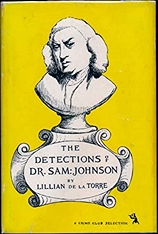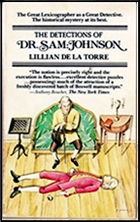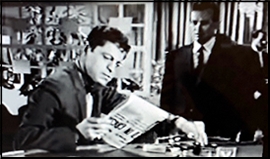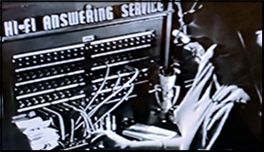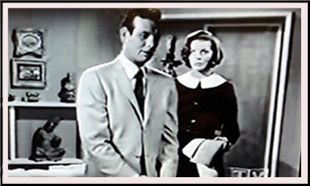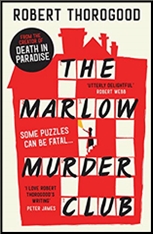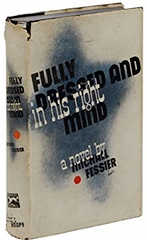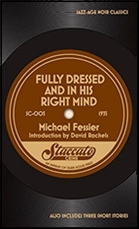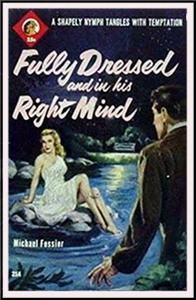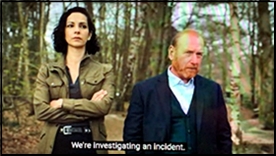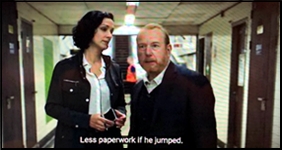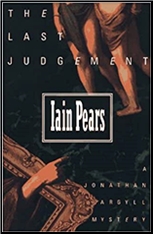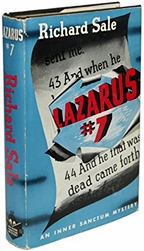REVIEWED BY DAVID VINEYARD:
ANTHONY ABBOT – About the Murder of a Startled Lady. Thatcher Colt #5. Farrar, hardcover, 1935. Avon Murder Mystery Monthly #25, digest paperback, 1944.
Thatcher Colt, Police Commissioner of NYC, District Attorney Doughterty, and Colt secretary Tony Abbot (an actual character unlike Philo Vance’s Van Dine) are strolling casually back to their offices when a policeman shows up looking for the Commissioner. It seems the police have just busted a phony church and spiritualist scam, and the husband and wife mediums, the Reverend and Mrs. Lynn, made their phone call to call in a professor who insists they are the real thing, and something more.
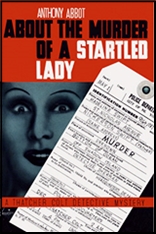
“I know it sounds screwy, Mr. Commissioner, but Professor Gilman told me to tell you that the Lynns were positively genuine mediums and could really and truly talk with the remains of the dead.”
“Was that all?”
“That was all — except a lot of hooey about how the Lynns could tell you about a murder.”
“About a what?” barked Dougherty. Until now he had been totally indifferent, stamping large, cold feet.
“Mrs. Lynn, the female of the mediums, is supposed to have got a message from what she calls her spirit guy—”
“Spirit guide!” corrected Dougherty.
“And the spirit guy brought in a girl that had been murdered and the body buried—”
That leads to an impromptu seance with the attractive Mrs. Eve Lynn, the medium, who contacts the victim, Madeline, who tells Colt where to find her body.
And it turns out there is a body, a woman, a woman whose body has been at the bottom of the ocean off Shadow Island, in two hundred pieces, with a bullet in her skull.
“It’s as plain as plain can be. Look at them — the bones of a petite woman, quite young, I should judge — not more than twenty-five at the outside, nearer twenty in my unexpert opinion. She probably weighed a little over a hundred pounds — there was a very slight curvature of her spine which makes her height a little uncertain — she was about five feet, four inches tall. She was probably from a good station in life. The hole in her skull was caused by a bullet and she died around May first.”
“The time the medium said.”
“Just about,” assented Colt imperturbably.
A fair enough start for just about any mystery, and shortly they uncover the name of the victim, Madeline Swift, a solid motive, a connection of Tammany Hall (and the DA is up for reelection and owes his position to Tammany Hall), and a suspect who couldn’t look more guilty but Colt isn’t so sure.
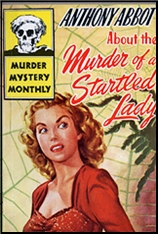
Anthony Abbot was noted writer Fulton Oursler (The Greatest Story Ever Told), father of pulp and mystery writer Will Oursler, and a noted literary figure of his day who famously chose his pseudonym because of its alphabetical advantages.
His Thatcher Colt mystery novels were in the S. S. Van Dine tradition, but like Ellery Queen, and Rex Stout, he often outdid the creator of Philo Vance with Colt, based on Theodore Roosevelt, himself a former NYC Police Commissioner, being at once more believable, having a great sense of humor, and his position as Police Commissioner giving him more realistic entry into the murders he investigated.
Most of the Colt novels are interspersed with actual touches of police procedure, here the reconstruction of the victims face from her skull, and Colt able to command his army of police and contacts around the country without the need for a DA Markham or Sgt. Heath or for that matter a policeman father.
The books eventually came to the screen with Adolph Menjou surprisingly well cast as Colt and later Sidney Blackmer, who often played Theodore Roosevelt in films, ideal despite a much lower budget.
Though the books never achieved the success of Van Dine, they hold up better over all, and Abbot at least never introduces the killer in the same chapter on the same page and paragraph in every book as Van Dine was apt to do.
Though as static and talky as any mystery in the Van Dine tradition Abbot keeps things moving at a decent pace, and throws enough curves and red herrings to delight even the most hardened aficionado of the form.
Who killed Madeline Swift, the startled lady of the title (based on the expression of the reconstructed face)? Was it the boyfriend, his forceful sister who disapproved of Madeline and her brother, the fanatic mediums using Madeline’s death to prove they are real, the Tammany Hall politician who may have been too interested in a girl the same age as his daughter, someone else?
“I don’t like to look the realities of this affair in the face. They’re too horrible. I don’t like to look at them. But I’ve got to. Right now.”
The red light of the traffic lamp spilled a hellish glow over the face of Thatcher Colt. In the crimson glow his eyes gleamed demoniacally.
“Right now!” he repeated. “Here’s the horrible part, Tony — I know who killed Madeline Swift now — but I can’t prove it!”
But prove it he will in an operating theater of a major hospital with a doozy of a final gathering of the suspects.
These aren’t without many of the flaws of the Van Dine school, and colorful as Colt’s model may be he doesn’t always live up to him, his portrayal in many ways a collection of traits rather than personality (his sartorial splendor making Menjou a natural to play the part).
This is mystery fiction as a game, dated in many ways, but also surprisingly modern in others (the Van Dine school was often socially conscious racially and ethnically in ways unusual for the period). I personally tend to prefer the Brits from this era to most of the Americans in the Van Dine school (Ellery Queen outgrew the Philo Vance business and Rex Stout had Archie’s hardboiled voice to appreciably change things up) including Abbot, but Colt is perhaps the most human of the Van Dine sleuths until Ellery’s humanization.
Not that he is never high-handed, most of the great detectives on either side of the pond are high handed, but with Colt it seems to arise from the needs of the case and his position as Police Commissioner. He is the most likable of the Van Dine sleuths, as well as one of the smartest.
There are a number of good entries in the Colt series, and they are worth reading if you like the form, Oursler is a capable writer, and not above a little theatrics to spice up the mix, and unlike Vance, no kick in the pants is needed.
